You’ve been turning for a little while, you like to turn, and most of your projects, those that avoided the fireplace, have been polished up and given to friends and relatives. Joe has visited you and the discussion turns to your hobby. “Here Joe is the bowl I turned last week!” Joe likes your work and suggests that you could sell these at the local Farmer’s Market. Sell my work? You’ve never thought of the idea. Pricing your turnings had yet to enter your mind.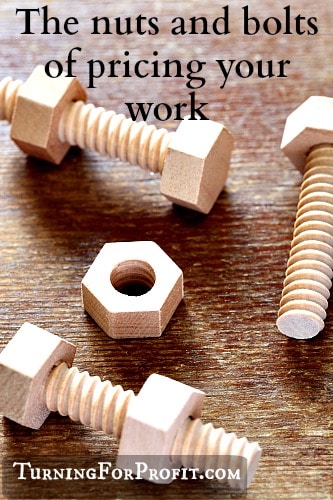
Your work is priceless
Your work really is priceless. It was made by you, with your own two hands. A baby rattle made by a Dad or Grandpa is really priceless. How can you put a value on a turning that was done for someone you love very much? What about that rolling pin that has been used almost daily since you turned it a few months ago? It’s destined to become a family heirloom. How do you go about valuing your work?
If your turning stays a hobby then you will not be too concerned about pricing your turnings. But if one day you want to sell your work then you will have to consider pricing your work. I wasn’t joking when I said your work is priceless. It is made uniquely by you. That makes it very special. In fact, that is your competitive edge in the market.
Okay. Let’s make this a bit easier. You’ve gone into your shop and turned a beautiful bowl. What price should you charge for your work? One rule of thumb is 5 times the cost of materials. If you have found local wood then your cost is zero! 5 times zero is zero! Local wood may be free but not free in regards to your time and equipment. So what price should you charge?
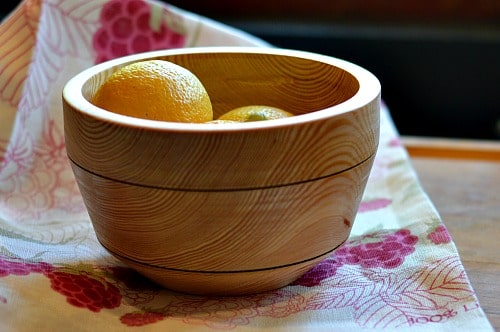
This is a bowl turned out of larch, literally rescued out of the fire because I started with a piece of firewood. So the cost was minimal. It can be very hard to estimate pricing based on the materials you are working with but you want to cover all the factors of your business.
Pricing your product should provide for materials, time, overhead, and risk of being in business.
Materials
This should include the rough cost of acquiring your wood. The purchase price, shipping, custom preparation costs, and any incidental costs you have incurred are all part of the cost of materials. If you are adding embossing or other items to your turning include these costs as well.
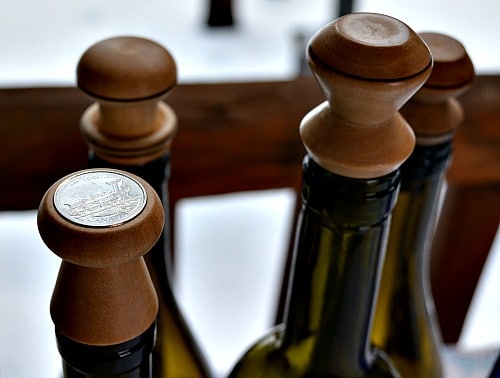
Consider the Bottle Stopper. This is a straightforward turning project. However, you need to calculate the cost of all materials used. The size of the wood is fairly small but if it costs you $ 5.00 for a dogwood blank and you can get 5 bottle stoppers then your cost is $ 1.00 per stopper. The plastic inserts were about $ 0.25. The quarter is obvious. So the material cost would have been between $ 1.25 and $ 1.50. Your pricing needs to consider this.
Time
If you have been turning for years then you have a pretty good idea how long it takes you to turn a medium-sized bowl. Richard Raffan has a rule of thumb on turning bowls over 6” in diameter. Take the diameter times the height to calculate the amount of time it should take you to produce the bowl in minutes. Use this to calculate the time factor in your pricing. According to this formula, the larch bowl above should have only taken me 20 minutes to turn! Remember that Richard has been woodturning for years.
When you are just starting you need to make allowances for learning the different cuts, how to attach the bowl to the lathe in different manners, and taking longer to achieve a good surface on the finished bowl. There are also efficiencies gained as you become proficient in turning each product that you make. Honey dippers are a straight forward project where you are not doing much decoration.
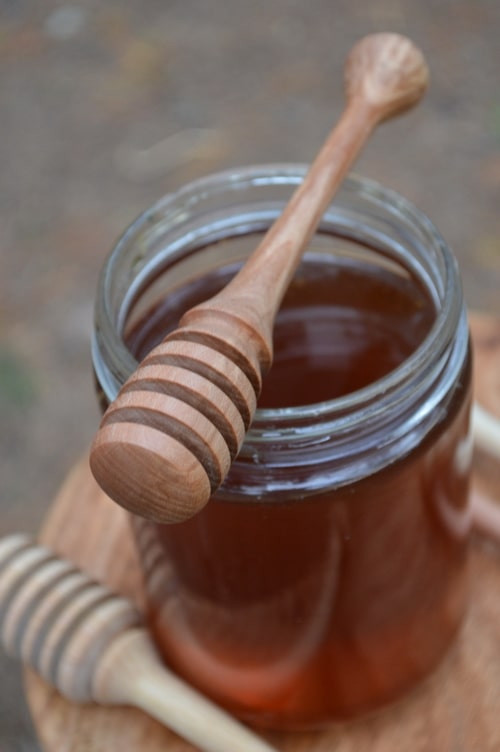
The first honey dipper that I turned took a good bit of time as I was thinking about dimensions and shape. After my fourth or fifth dipper, it took much less time to turn. I knew what I was doing and I was warmed up with my tools as well. Production efficiencies are a great way to reduce the time it takes to make a product. Your pricing should reflect the benefit of some turning efficiency as you get more proficient.
Make sure your time allowance is larger than your lathe or production time. Depending on your work processes you will need a time allocation for the setup of equipment, preparation of the wood for turning and processing, finishing time, and storage and handling. The nature of your products will affect this. Fine ceramic pottery requires greater care in storage than rustic turned bowls. Thin natural edge bowls would need individual packing rather than several in a box at once. If a product needs extra care and attention then your pricing should reflect that. You get to set the hourly rate for your time. Don’t undervalue yourself.
Overhead
Overhead is a nebulous concept. It is always a part of your business expenses but it is really easy to ignore. Kind of like the forest canopy when you go for a walk. This is looking up from the base of four aspens on the farm.

Overhead would include the cost of equipment, tools, electricity for the lathe, lights, and heat. You might need to include rent and insurance depending on how and where you are working. Include the cost of using your vehicles for business purposes. Office expenses for advertising, brochures, web site, business cards, etc. are all part of the indirect cost of doing your art. If your pricing doesn’t include these items then the selling price won’t give you enough money to keep going. Or the value of your time in the product goes down until you are getting less than minimum wage for your effort. (Been there, done that, even wove the t-shirt!)
Risk of being in business
This is the residual profit that rewards you for taking the effort to be an independent business owner. It’s what the shareholders receive for owning a limited company. If there isn’t any extra for you in doing your art then you are probably better off working for someone else. Of course, the main reason you are doing this is that you enjoy your craft. If the return on your business is too low you will end up resenting the business side of your art and not enjoying the craft side of it at all.
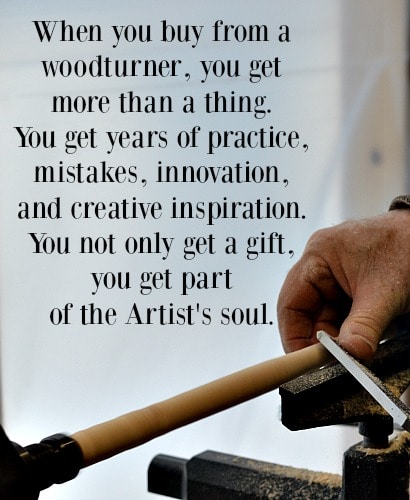
Keep the pricing on your products higher rather than lower. This will give you a better return for your time and effort and allow you to continue enjoying your turning. Not everyone will agree with you, but then not everyone is your customer either. Turn beautiful products and you will build up a loyal audience and following. These are the people you should focus on.
Taxes
You knew this one should have made the list. Well, sales taxes are usually in addition to the price items mentioned above. Sales taxes depend on your circumstance and the provincial or state rules that apply. In Canada, if you have sales of less than $30,000 then you do not have to charge the federal sales tax (GST or HST). BC has a sales tax on the sale of any tangible products. Whether the tax must be added on top of the price or included in the price depends on your jurisdiction’s rules. Remember that the price calculated to cover material, time, overhead, and risk of being in business, does not include sales taxes.
Income taxes will come out of your risk of being in the business area. So no, you don’t get to keep it all but if you are losing money then you won’t be paying any taxes. If you are making money then talking to your local professional accountant might be in order so that you save enough for the government.
Other price considerations
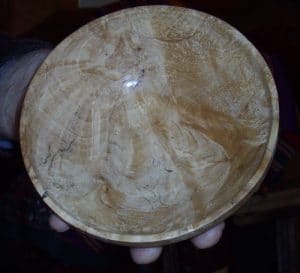
Set a price that reflects the fair value of your work. Cheaper wooden items are available at the local thrift stores and mass-produced for the box stores. Your work is unique and produced by you. It has your artistic signature on it. You could be using unique local wood or recycled wood. Sell your work and the story that made it.
You will never satisfy those who shop the box stores. However, the customers who know what you are doing, and value your craftsmanship, will willingly pay the real value of your work. In selling the fiber art for Joybilee Farm I spend a lot of time explaining the unique nature of our products and the materials used. Those customers who spend the most, usually understand what we do and don’t require an explanation.
When it comes to artistic work, price is usually not the issue. Sell your work on its own merit. That is has a high level of quality control. Don’t produce junk. Smooth the bottom of your bowls and ensure each has a good finish and polish.
In time you will learn the value and prices of your personal market. You might have to change your selling venue from a flea market to an art gallery for your art to be appreciated. Some craft fairs are not suited for high-end artistic work. Your attitude while selling your work also influences the customer’s response.
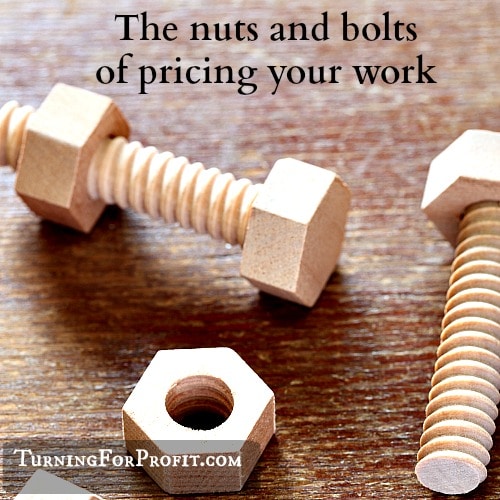
Conclusion
The pricing of your products reflects on the worth of the item and also on the value of the artist. Your money mindset could be influencing the prices that you are willing to charge. A low price communicates that you might have a low value of your ability and/or your product. A value that is too high can also be negative, that is, it will exaggerate your worth. The price that is in balance is the goal. You are an artisan and you deserve a fair return on your work. As Richard Raffan says about selling your work: “In the final analysis, if your customer thinks he or she is getting a bargain, or at least very good value for the money, while you think you’re getting a fair (or more than fair) return for your efforts, you have got things right.”
Over to You
Have you any tips or techniques for valuing your work? What issues concerning the pricing of your art have caused you the greatest frustration?
Turning For Profit
If you have any questions about turning or the business of turning, please leave me a comment at the bottom of the page.
These posts are for you, the woodturner. If you like turning projects or articles related to the business of turning then please sign up for the Turning For Profit newsletter. Generally, it comes out once a week and has links to the current articles, a bit on what I am up to, and usually a question for your response. You can sign up on the right sidebar or just a little lower on the page.
I love woodturning and sharing with you. You can follow me on Facebook as well. Thank you for allowing me to join you on this woodturning adventure. Have fun and remember to turn safely.


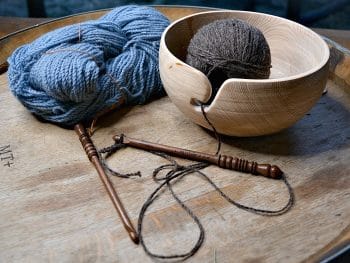
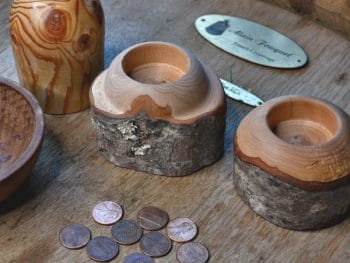

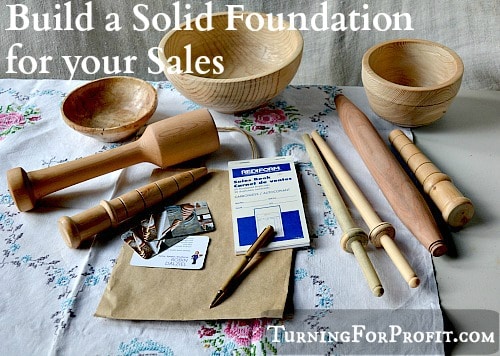
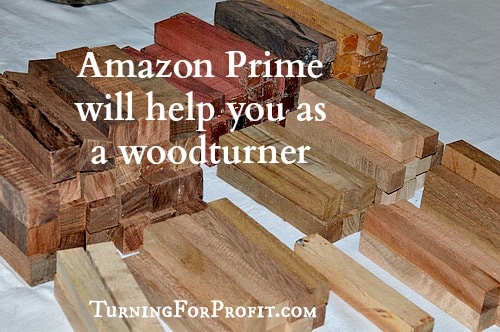
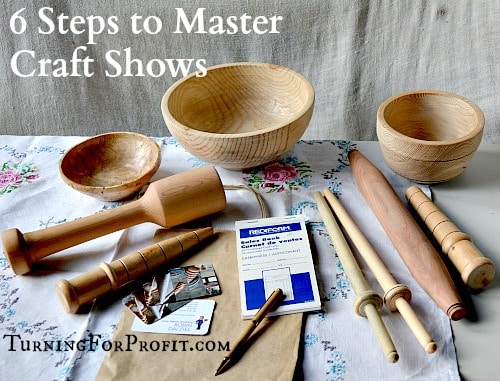
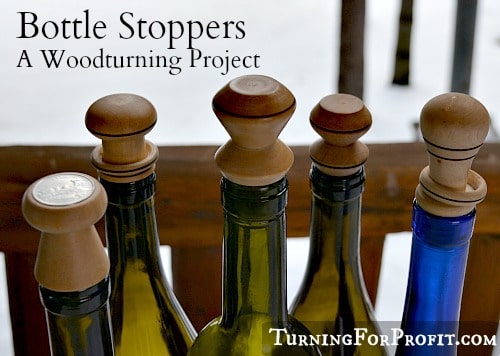
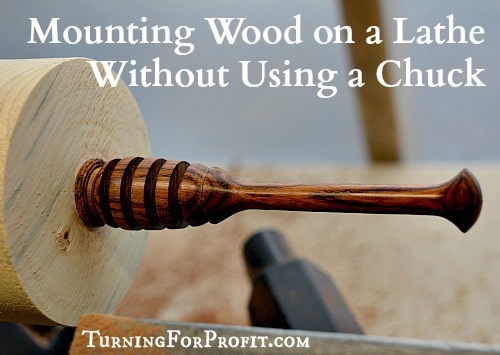
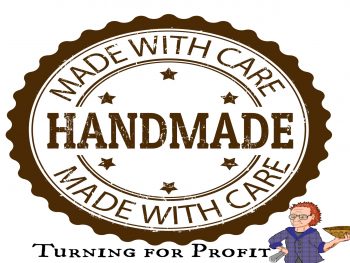
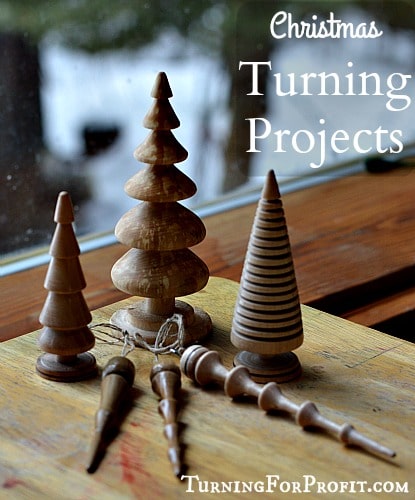
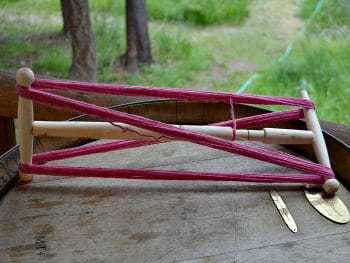
I knew what you were going to say but…. I was a furniture maker in California for 19 years and I have been turning here (Prague) for 13 years. There is a limit ro price. Yes, I can (and could) sell a few pieces for what I need but not enough to pay costs. Now at age 78 I no longer worry about it. It is my life, even end of life hobby. But for younger people there is a ceiling. The problem is compounded by the fact that few people have any experience with making. They don’t even cook. Many crafts people reduce overhead by moving to the country but this reduces exposure to new ideas, cultural currents and experiences not to mention your market.
I have tried selling at craft fairs many times. People are looking for a bargain, and so I don’t sell many. I finally started selling at a local artisan shop. I had them originally set the price, based of their experience, and have been selling! Woo Hoo! It has given me the confidence that I needed in my work, as I am new and still make alot of mistakes, I am thinking that maybe I should raise the prices gradually, to find my “sweet spot”. What do you think?
Finding the right place to sell your products is crucial. You need to monitor how your sales are in each venue. Definitely raise your prices! Seriously most woodturners / artisans struggle determining a good price. Glad the switch works for you!
I have found that your two criteria are impossible in my market where the great majority of people sneer at crafts made of wood unless they are pepper mills or cutting boards. Etsy is very little better.
I use a simple formula for bowls then adjust up or down from there. Diameter times height times two. Is it is exotic wood or has inlays I go up alittle from there. If it happens to be a small bowl I might go down alittle. The formula gives me a good base price.
I would like to sign up for your newsletter. Thank you, Jim H
I agree with this article 100 percent, but these people are working for dam near free. The price these people are getting for turning a bowl, vase or plate is nothing by the time they get done with material cost and equipment cost and their time making it and marketing time to sell it. Risk to reward is not there. Now if you don’t put your name on your product you are tell me your labor is of no value. NONE.
You are selling your name and workmanship, you are an artist are you not. Not everyone can do what you do and be proud of your work.
Find you sweet spot and run with it and Art shows may be the wrong place to be. Pick your shows, just because they except you does not mean you need to accept them ask them some question like how many vendors, what type, and quality of work at the show. What the show made in the last three years. When you ask these questions it also tells them something about you. You have to create a name of excellence, a true artist and a business man. If you give your work away then that is what it is worth and what you are worth, it’s your choice.
Be a great Artist and have fun
C. Ray
It is always a joy to someones views on pricing. I have been turning and selling for 14 + years. Some have been better than others but most have been uplifting and supporting my retirement.
One problem that I have is those who come into the picture as a new hobby and really have no idea what they are doing, other then cutting someone else’s prices. I used to get mad and then I realized that these turners are just beginning like I was once. I have had potential customers come up to my booth and point out the difference in the costs. My only answer is that I have been here and doing this for years. Not everyone is going to keep coming back.
I sell at a Saturday Market, Highend Art Festivals, Art Galleries and Online (Etsy and my Website). Etsy is not better then a local flea market. I use it as an arrow pointing to my website. Do you know of any online Art Sites open to a limited individual artists with quality art?
I am looking forward to your newsletters.
God Bless and Stay Safe,
Gary
I have been turning for 10yr and selling at markets for 5yr. I ended up pricing based on an early bowl I sold to a friend:
– I added 20% to this price to allow for “mates rates” then worked out a price per cubic cm.
– Using a spreadsheet volume is calculated on diameter and height and then price based on cents per cubic cm. Each bowl is allocated a unique number, timber species and finish are also included.
– Using the mail merge feature Price tags are printed for each piece, this also discourages bargaining (mostly).
I have put the price up some since I started reflecting my improved technique.
Price also adjusted for timber quality/scarcity/colour.
It is still my hobby but pays for itself plus my fishing and cycling so I am happy with that.
Quotes I have heard: If you sell out, you are too cheap. If you decide $50.00/ shop hour is a good rate, as a beginner you should charge more than I because with experience, I am faster than a beginner. People that go to “Craft” shows want change from a $20 bill.” We want to do “Art” shows. If you don’t think more of your item than that (a cheap price), why should I? Who else are they going to get to do this, and how much would (insert the name of the best business person you know) charge? It doesn’t go out the door if it’s not the best you can do. Find something you love and you’ll never WORK a day.- But you can’t make a living at collecting bottle caps.